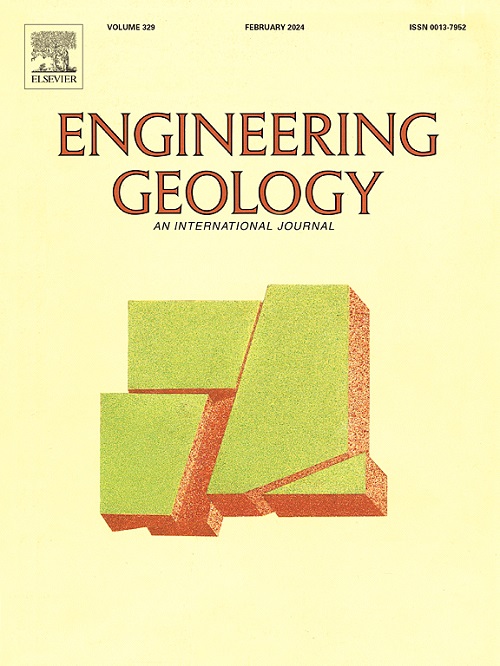A general solution for groundwater flow around deep excavations based on non–dimensionalization techniques
IF 6.9
1区 工程技术
Q1 ENGINEERING, GEOLOGICAL
引用次数: 0
Abstract
In the context of excavations, the seepage flow rate under retaining earth structures can be pre-quantified using numerical methods, analytical solutions, flow networks, or sets of abacuses. The type curves existing in the literature generally examine 2D scenarios of isotropic hydraulic conductivity in which the horizontal extension of the domain is infinite. Employing the protocol of discriminated non-dimensionalization of the governing equations and boundary conditions, the dimensionless groups that govern the solution to seepage in anisotropic scenarios can be derived. This solution is established through an unknown functional dependence by applying the pi theorem. Three scenarios are studied here: i) a finite horizontal extension of the domain, ii) a finite vertical extension of the domain, and iii) a finite domain size in the vertical and horizontal directions. Numerical simulations are used to verify the results, and new type curves are presented for a wide range of values of the deduced groups. A case study consisting of a 400 m-long excavated trench in a free aquifer is presented to illustrate and validate this study by comparing the pumping rate applied during construction with that calculated using the type curves.
求助全文
约1分钟内获得全文
求助全文
来源期刊

Engineering Geology
地学-地球科学综合
CiteScore
13.70
自引率
12.20%
发文量
327
审稿时长
5.6 months
期刊介绍:
Engineering Geology, an international interdisciplinary journal, serves as a bridge between earth sciences and engineering, focusing on geological and geotechnical engineering. It welcomes studies with relevance to engineering, environmental concerns, and safety, catering to engineering geologists with backgrounds in geology or civil/mining engineering. Topics include applied geomorphology, structural geology, geophysics, geochemistry, environmental geology, hydrogeology, land use planning, natural hazards, remote sensing, soil and rock mechanics, and applied geotechnical engineering. The journal provides a platform for research at the intersection of geology and engineering disciplines.
 求助内容:
求助内容: 应助结果提醒方式:
应助结果提醒方式:


